The 50-mile path of the AT through Connecticut was a mix of terrain, passing through low mountains, river basins, and towns.
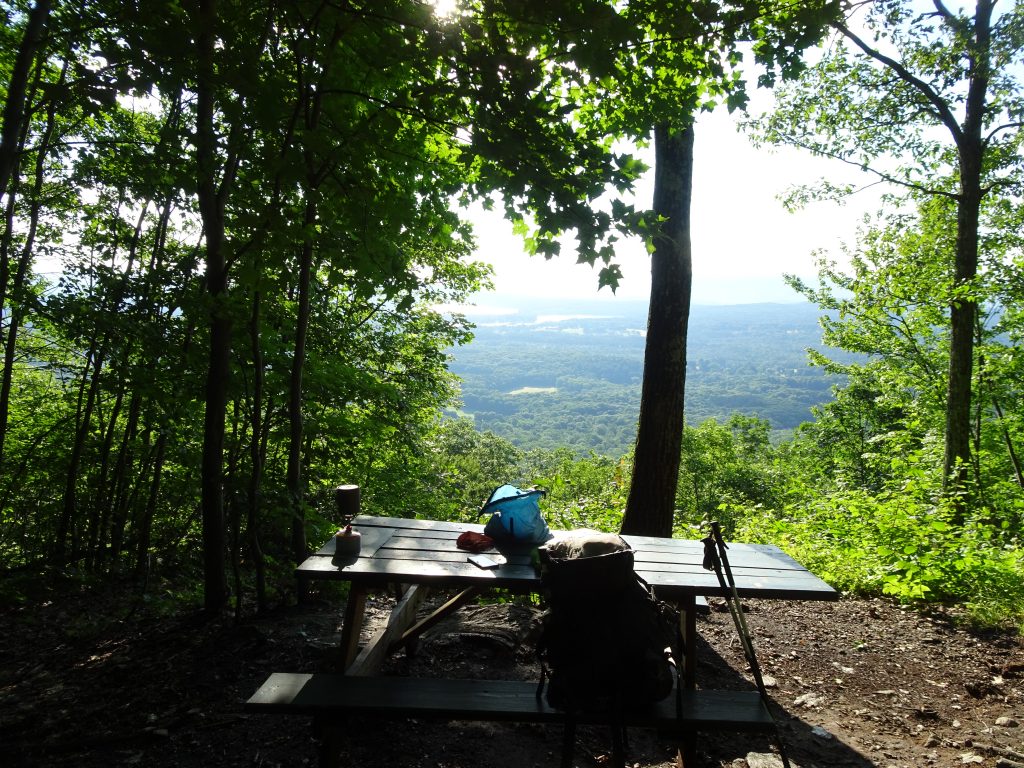
Nice view during breakfast at the campsite
Even though they mountain sections in Connecticut were at low elevation, the trail had a lot of ups and downs. On one particularly challenging day, with the temperature topping 90 degrees and my energy level low, it took me over ten hours to cover 15 miles. (On most days, I cover 10 to 12 miles before lunch). A good part of the day was spent zigging and zagging up and down the flanks of nameless mountains (to me) with no views to speak of. I found myself grumbling, “Why have they made the this trail so unnecessarily hard?” It occurred to me that trail is 80 years old and that back in 1937, most of the trees blocking my views weren’t even born yet. In any case, my navigation app said I had climbed 3600 and descended 3400 feet that day, even though the elevation never topped 1400 feet.
The trail crosses Bear Mountain, the highest peak in the state at 2323 feet of elevation. On top of the mountain is a monument originally constructed in 1885. The monument, built from stacked stones, is 20 feet square at the base, 22 feet high, and is shaped like a set of bleachers. Hikers pick their boulder on which to sit, then relax and enjoy the view.
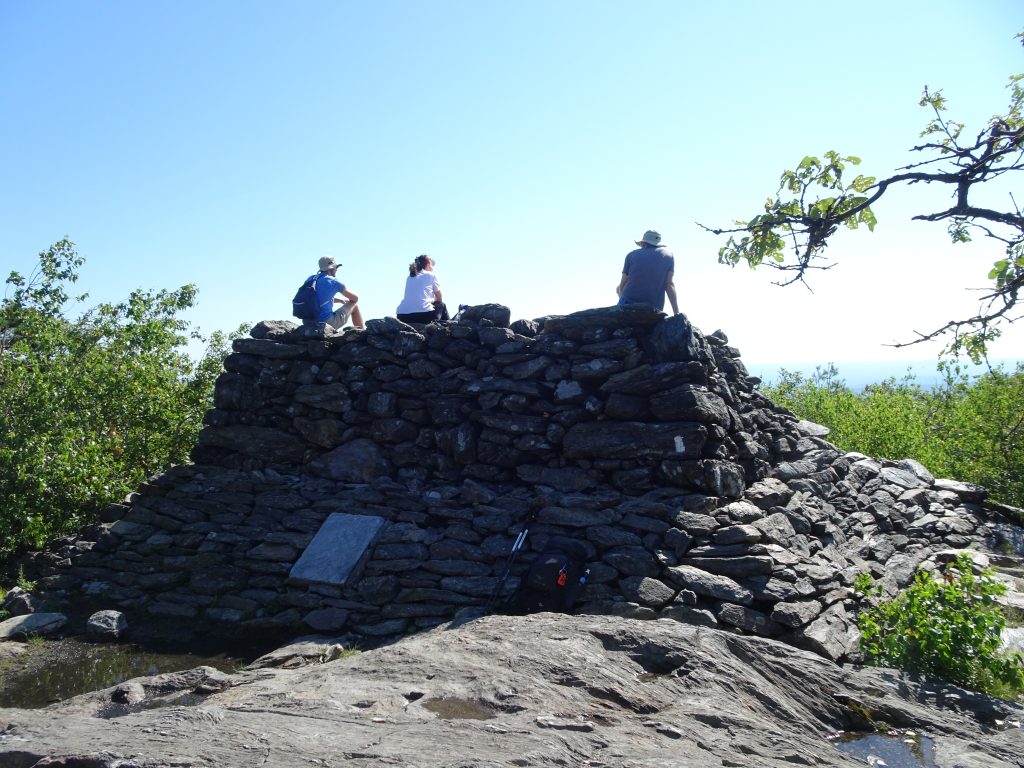
Monument on Bear Mountain
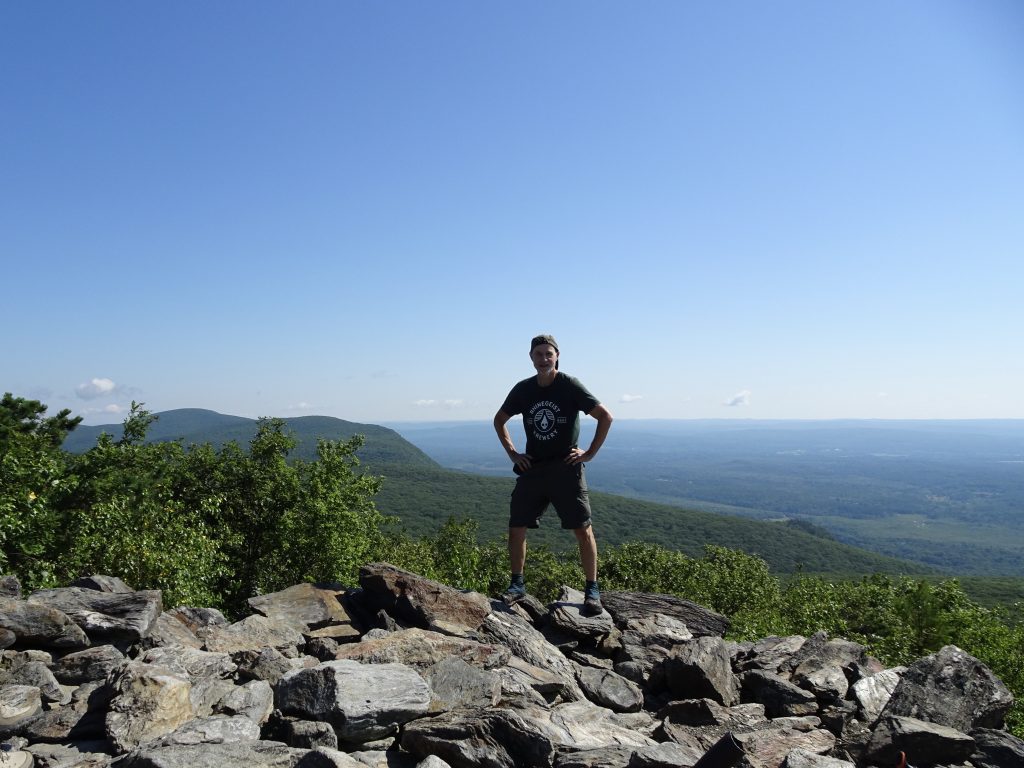
Randy on top of the monument
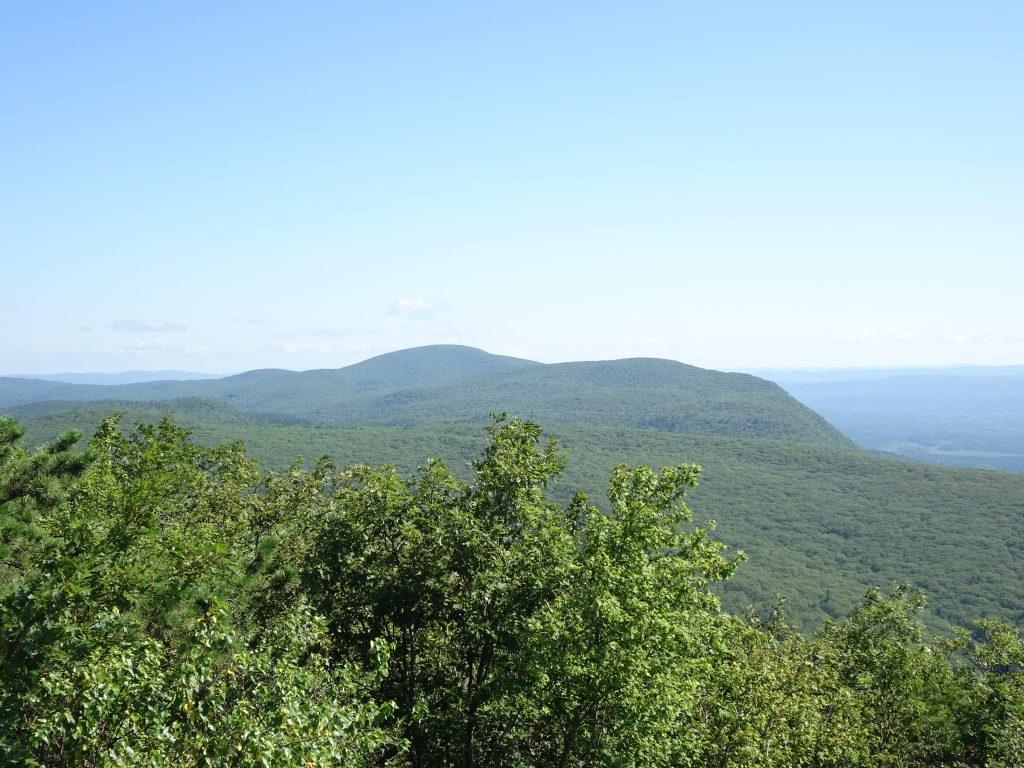
View of Mount Race and Mount Everett from Bear Mountain
The trail runs roughly parallel to the Housatonic River. The river walk sections of the trail provided for nice views and pleasant walking.
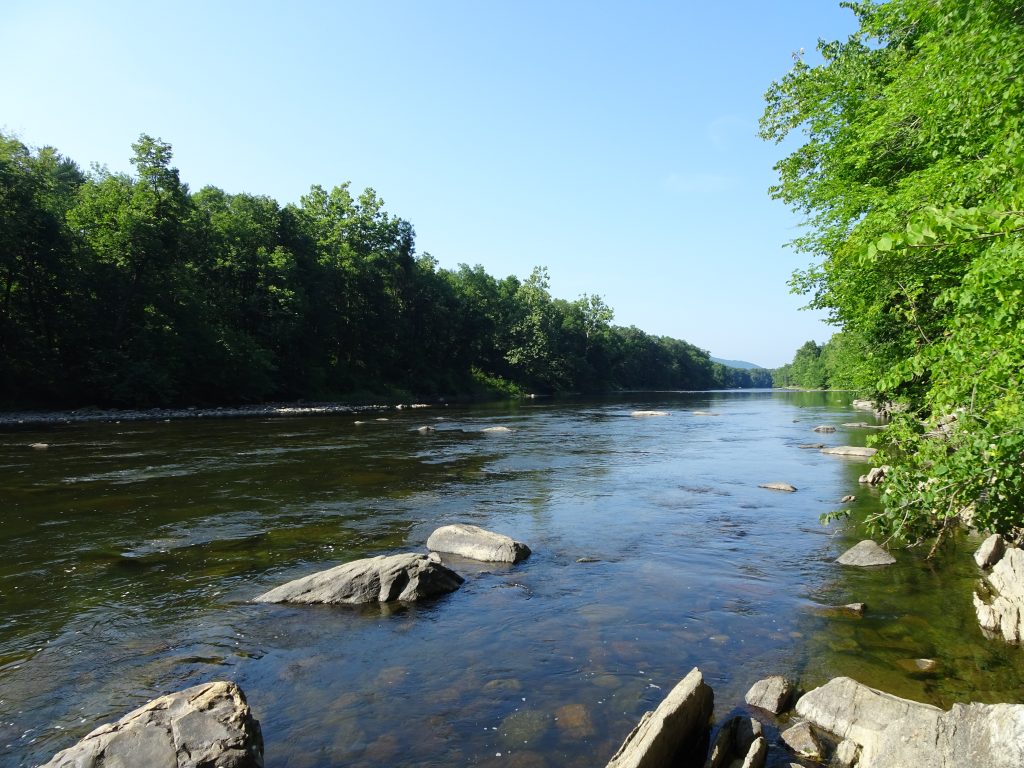
Housatonic River
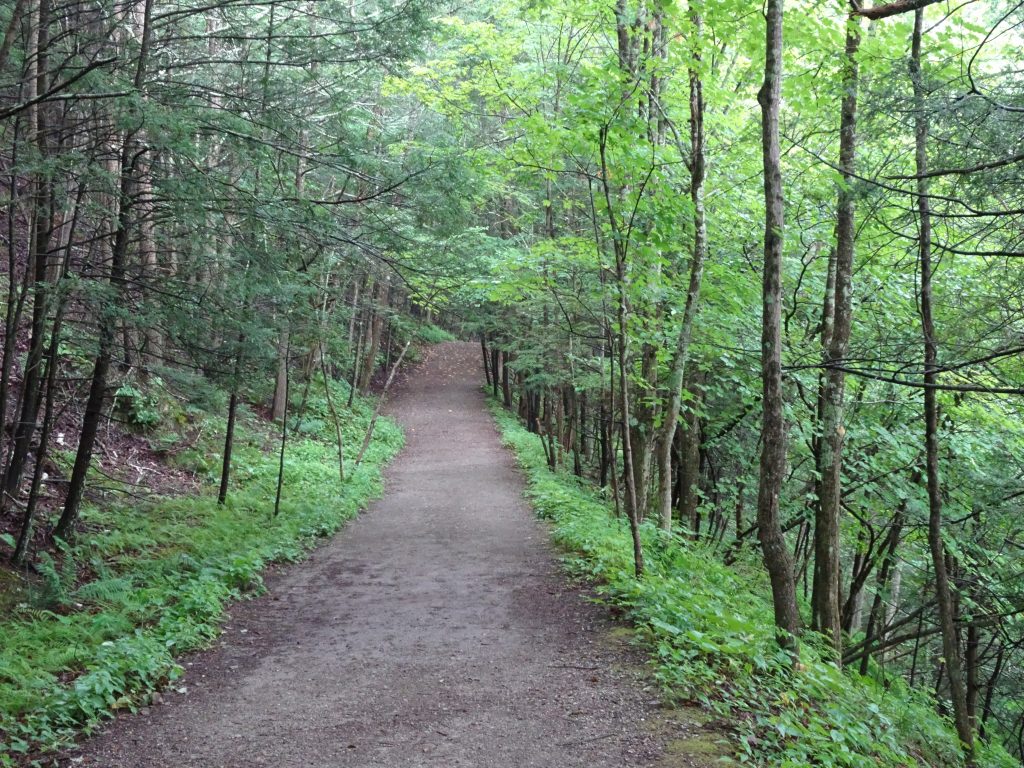
Peaceful walking along the Housatonic
While in Connecticut, I visited the towns of Kent and Salisbury, both of which are accessible via short walks from the trails. Each of these towns seemed like a nice place to live or to pay a visit.
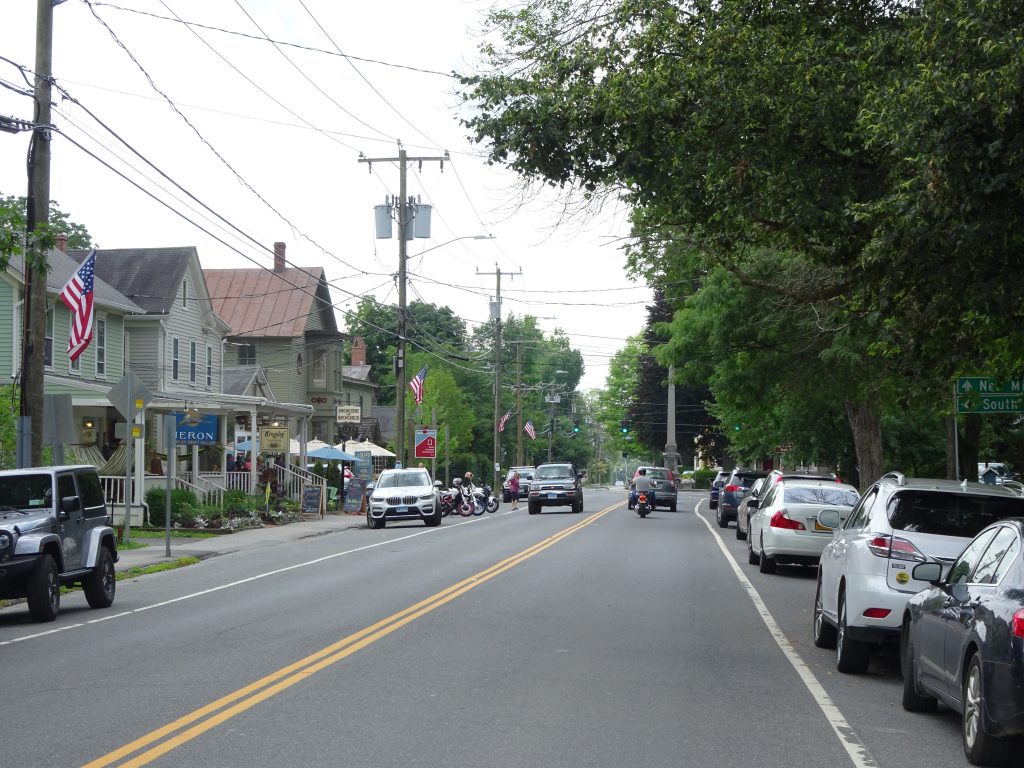
Kent, Connecticut
The day I visited Salisbury turned out to be the day the conservation people trapped the town bear. I had been seeing warnings in the trail journals about not leaving your pack laying around as there was a bear on the loose. In town, the locals told me that the bear had been marauding about town for months and getting into people’s trash cans. Apparently, the bear was fearless and would walk past people at close range and not give them the slightest notice. The town folk seemed disappointed with the news of the bear’s capture, as the bear had become somewhat of a town mascot.
For those wondering how hikers handle “mother nature’s call” on the trail, here are the options. Obviously, the first choice is to use a flush toilet In town or at a park. The next best, and most common choice is the privy which can be found at most shelters and campsites. The fallback option, and something I have mostly avoided, is to dig a “cat hole”.
I have found that thru hikers view themselves as privy connoisseurs. Any discussion about a campsite always leads to a rating of its privy. Here are a couple examples.
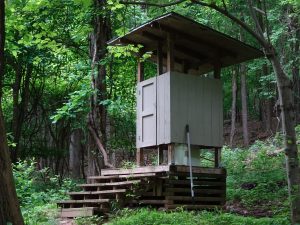
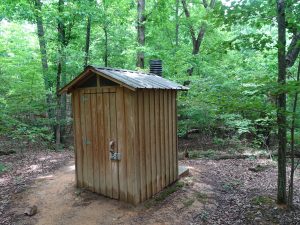
There are a multitude of privy variations with no two seeming to be exactly alike. Nearly all “moldering privies”, which are designed based on a principle of continuous and cold composting. Contrary to what you might expect, the majority of privies don’t smell bad and are better than most portalets.
Some privies, like this one at Chestnut Knob Shelter in North Carolina, don’t have a door. The open design lets you enjoy the view and maybe even get in a little birding while you sit.
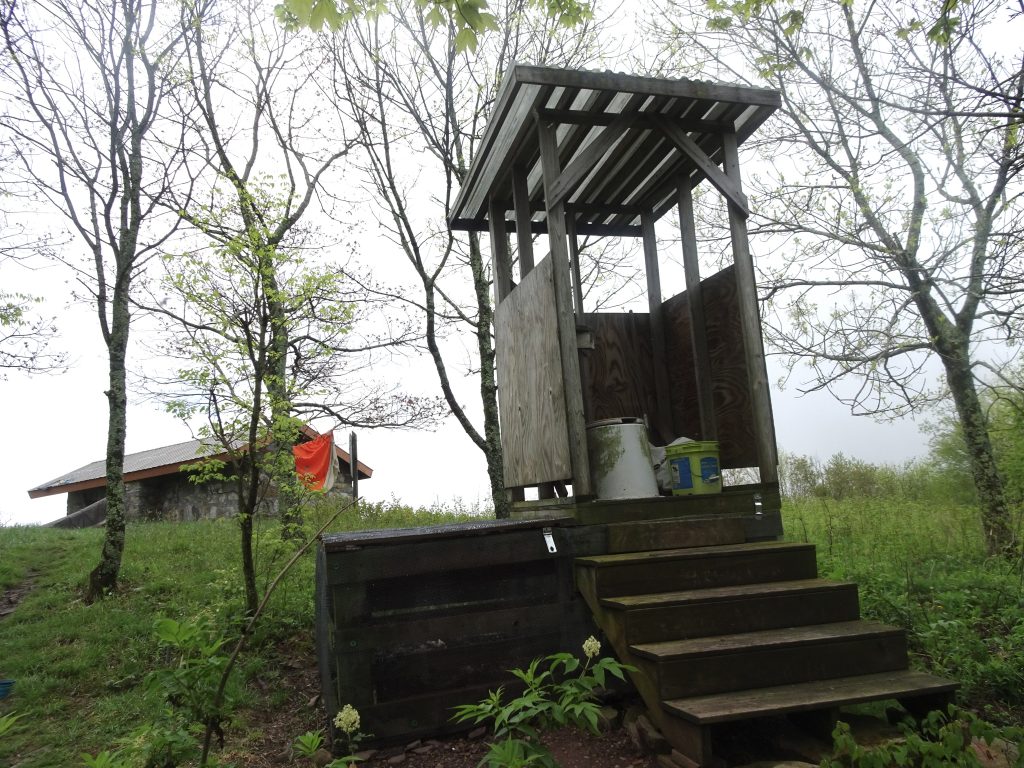
Room with a view
There is a big disparity in the privies in Connecticut. The shelters have very deluxe privies. This seems fitting since all the trail signs are tastefully color-coordinated and carefully lettered.
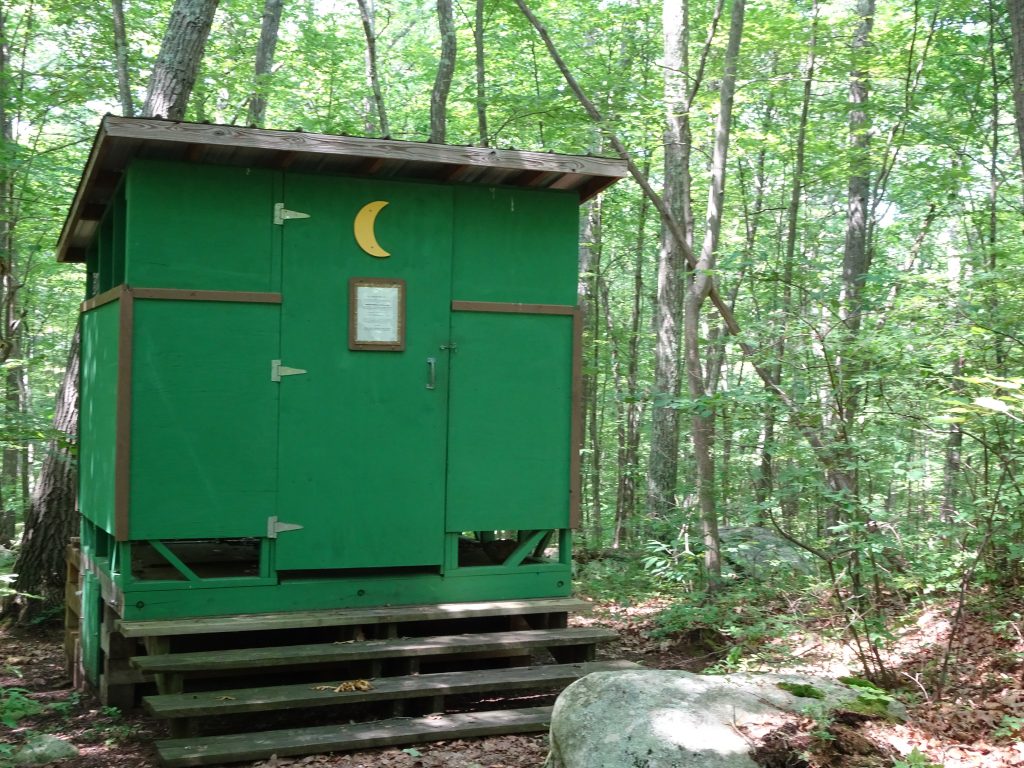
Privy at a Connecticut shelter
The privies at the Connecticut campsites are a different matter. No walls! To use this privy, one would need to find a partner to act as a lookout.
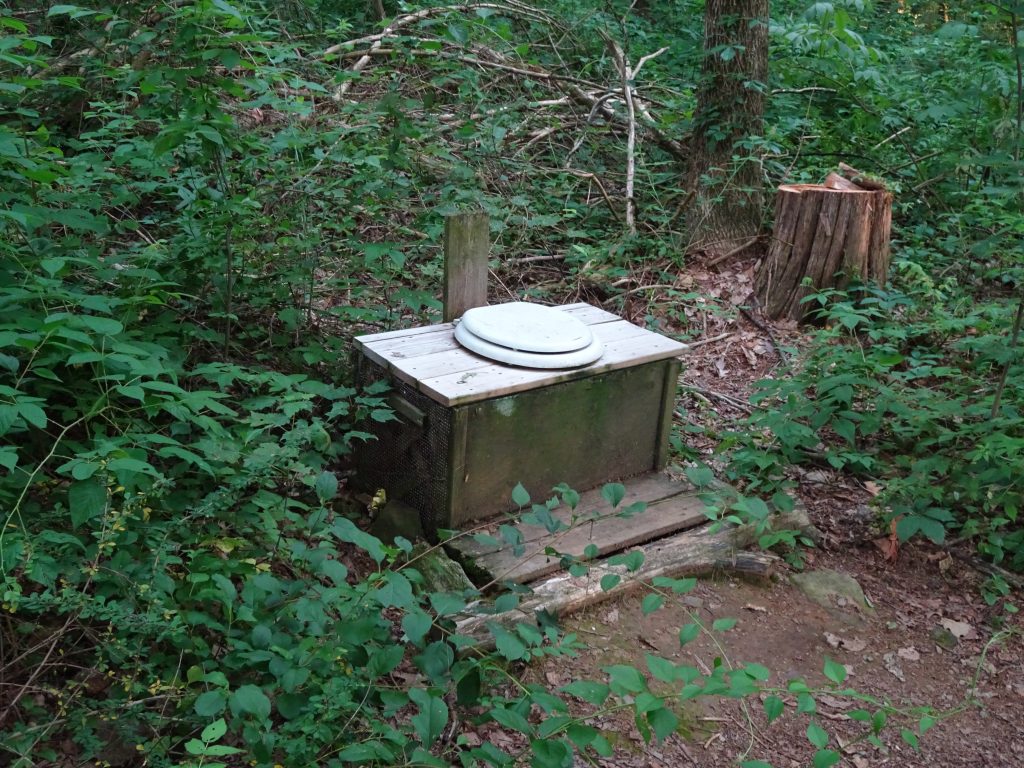
Privy at a Connecticut campsite
A while back, I became aware that the female Red-winged Blackbird is not black, but is brown. This is another example of where the male bird has the striking coloration while the female is more muted. I have been on a mission to photograph a female. The females are much more shy than the males, so this turned out to be harder than I anticipated. Finally, in a Connecticut swamp, I found one to pose for a picture.
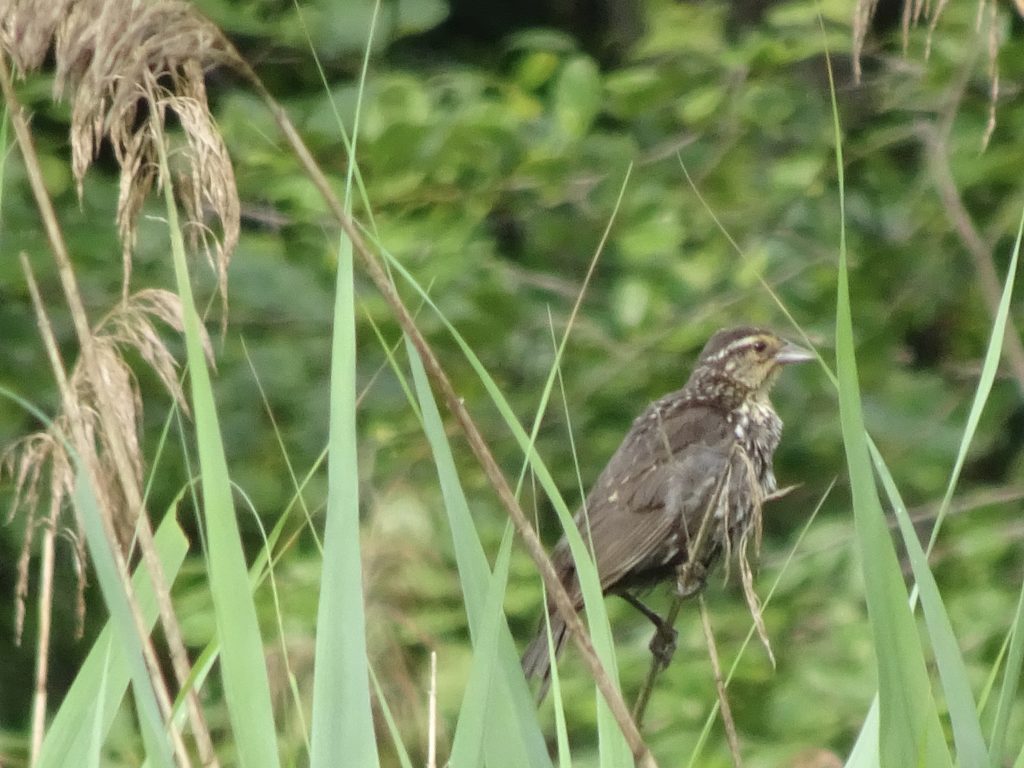
Red-winged Blackbird (female)
I always take care to avoid stepping on them Red-spotted Newts which I are still common on the path. The ones I am seeing are juveniles, called “efts”, which breath air and live on land. The adults, which can live to be 15 years old, are green in color and live in the water, although they still breath air.
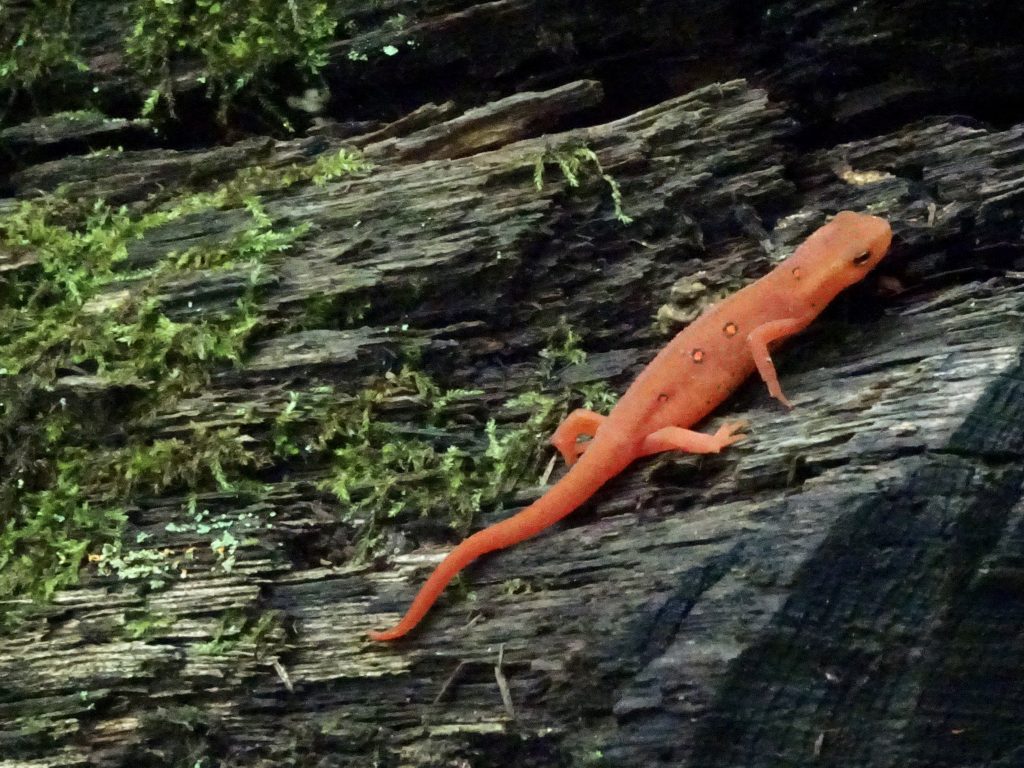
Red-spotted Newt
Other flora and fauna…
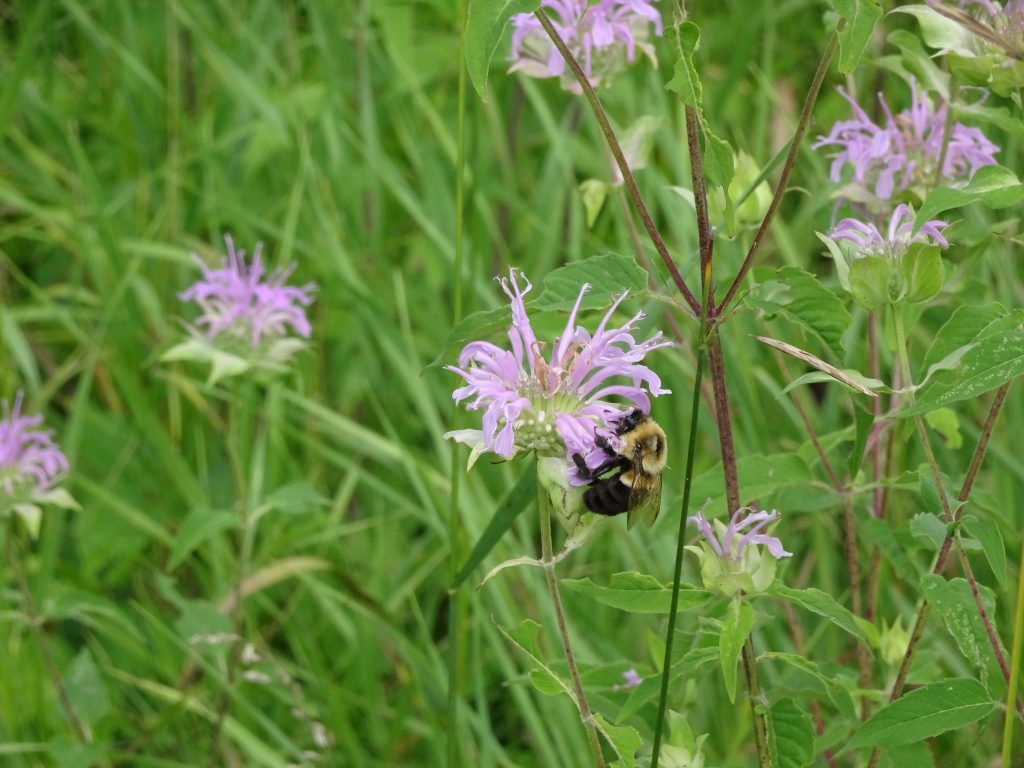
Bumble Bee on Pink Bee Balm
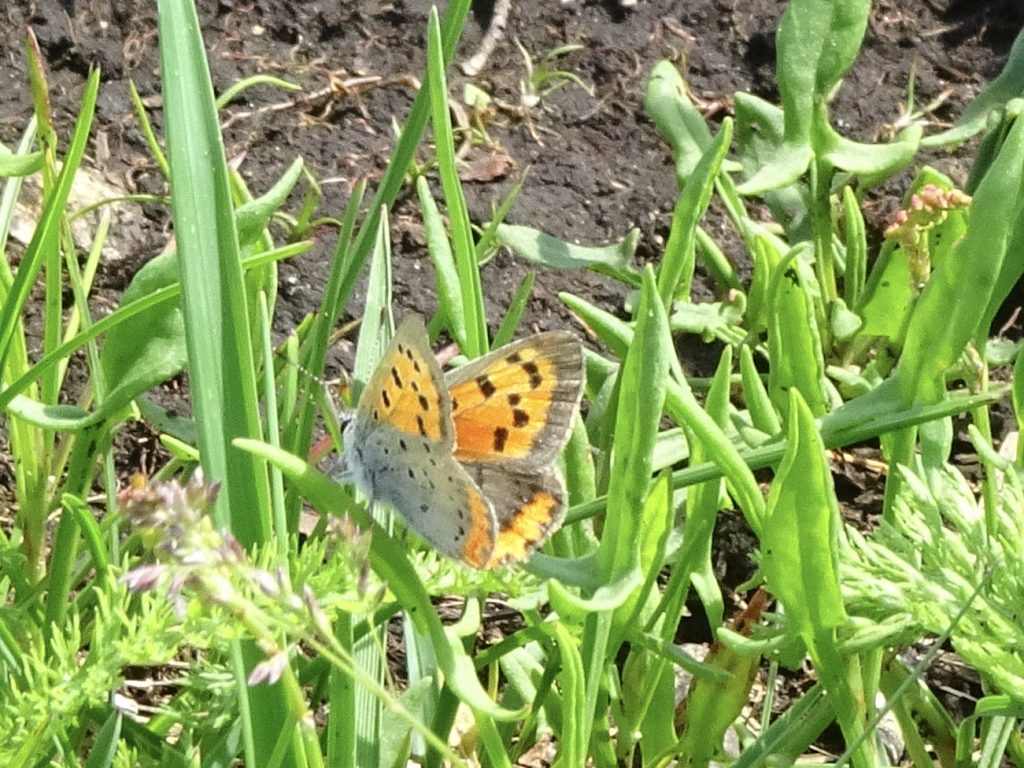
American Copper Butterfly
If you’d like to receive an email when a new post is up on the blog, click the email icon on the bottom of the page to subscribe. Thanks for following!
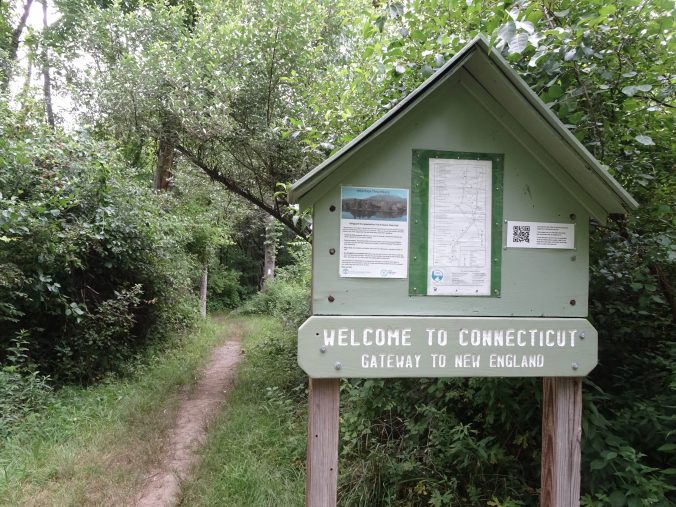
Haha those privies reminds me of Sherek the first movie! haha
Just curious……how are you faring on your daily mileage? What are you averaging, and before you left, what were you daily mileage projections? Do you think you will complete the trail close to the time you thought you would?